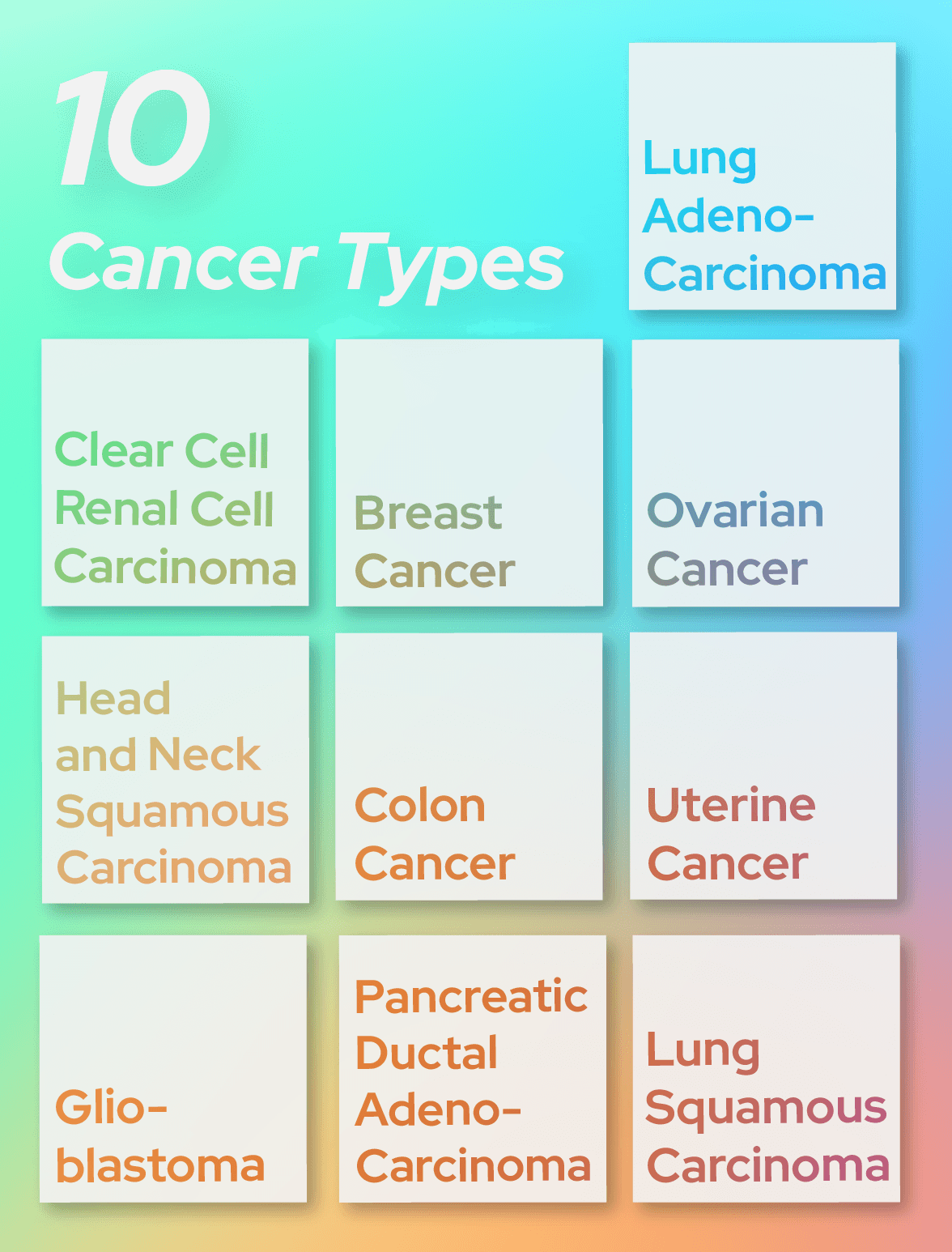The tumor microenvironment (TME) is a complex network which plays a crucial role in cancer progression and treatment responses. In a recently published Pan Cancer analysis, the Clinical Proteomic Tumor Analysis Consortium (CPTAC) has delved into the TME heterogeneity, exploring cell type composition, immune subtypes, and their associations with various clinical and molecular features. The study leverages proteogenomic data from samples of 1,056 treatment-naive patients with 10 different cancer types. This work is the first to report insights into cancer immunity gained from integration of comprehensive proteomics, genomic, and epigenomic data.
 Alexander J. Lazar, PhD from the University of Texas MD Anderson Cancer Center, highlighted the importance of their multi-omic approach: “The deep examination of proteins across multiple cancers in this project brings to light immune regulatory and control features that we could not see by genomic approaches alone. This combined proteogenomic approach provides insights into cancer immunity that could benefit our patients.”
Alexander J. Lazar, PhD from the University of Texas MD Anderson Cancer Center, highlighted the importance of their multi-omic approach: “The deep examination of proteins across multiple cancers in this project brings to light immune regulatory and control features that we could not see by genomic approaches alone. This combined proteogenomic approach provides insights into cancer immunity that could benefit our patients.”
An algorithm was used to estimate cell type-composition fractions in the TME based on bulk gene expression and proteomic profiles. Overall, extensive heterogeneity was observed in the cell type composition between and within various tumor types. CCRCC, LUAD, and PDAC were identified as cancer types with the highest immune infiltration. UCEC showed the highest tumor cell percentages but the lowest immune and stromal infiltration.
In conversation with Dr. Lazar, Michele Ceccarelli, PhD from Miller School of Medicine at the University of Miami, elaborated on the group's methodology: "We leveraged the multi-omics profiling of thousands of patients to study how genetic, epigenetic, transcriptional, and proteomics factors interact to shape the characteristics of the tumor microenvironment. Our work can help us to understand why only a subset of patients benefit from immune therapies and have the potential to identify new therapeutic targets."
Researchers stratified the TME into 10 immune modules which were characterized using consensus clustering to identify seven immune subtypes, each with specific immune and stromal features. These immune subtypes were significantly associated with key demographic variables, including an overrepresentation of females in the CD8+/IFNG+ subtype and East Asian patients in the CD8-/IFNG+ subtype. Significant associations were also found between immune subtypes and somatic mutations or copy number alterations, beyond those originally described by the TCGA Pan Cancer study, revealing notable differences, and providing more resolution and suggesting novel connections between genomic alterations and the TME.
Pei Wang, PhD from the Icahn School of Medicine at Mount Sinai reaffirmed their research objectives: “We aimed to improve our understanding of the mechanisms underlying the functional impairment of immune response in tumors. By closely examining genes and proteins in the tumor tissues, we discovered various patterns in immune activation and suppression. Our goal in unraveling these diverse immune subtypes is to help clinicians identify patient groups more responsive to immunotherapy. Revealing the specific pathways and cellular switches for each subtype can also spark new and creative ways to develop treatments.”
Leveraging phosphoproteomic data, the team characterized kinase activity patterns across immune subtypes, and identified kinases and transcription factors associated with tumor immune profiles, opening avenues for potential druggable targets that may enhance responses to immune therapy.
Additionally, researchers used a type of artificial intelligence called a convolutional neural network (CNN) to identify different immune types in tumors by analyzing images of tissues under the microscope. Morphological features, particularly cell shape and size, were found to be differentiating factors between tumors, leading to the discovery of correlations between morphological features of neoplastic cells and cytokine expression pathways.
Avi Ma’ayan, PhD from the Icahn School of Medicine at Mount Sinai, discusses the potential for therapeutic developments: "By combining genomics, transcriptomics, proteomics, and phosphoproteomics profiling of over 1,000 pan-cancer tumors, we were able to computationally discover a set of key novel drug targets. This module of protein kinases inhibits a module of immune transcription factors. By targeting these kinases with small molecules or other means, we may be able to convert cold tumors, tumors that do not respond well to immuno-therapies, into hot tumors which will more likely respond better to such therapies."
Proteomic and genomic data for the CPTAC Pan-Cancer cohort are accessible to the public through the Proteomic Data Commons (PDC) and Genomic Data Commons (GDC). Additional processed data are available on PDC publications, and processed genomic data that with controlled access data can be obtained at the Cancer Data Service (CDS). Interactive ProKAP and PhosNetVis data portals provide tools for querying and visualizing kinase and transcript factor activities, as well as selected regulatory networks.

